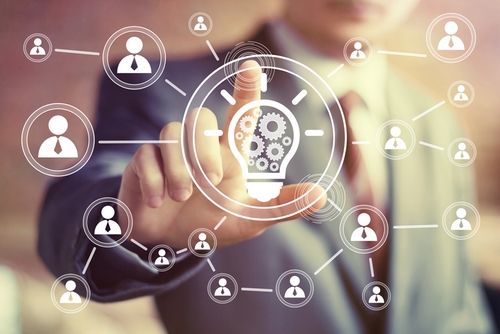
Blockchain: What it is and where it's useful
Blockchain goes hand in hand with Bitcoin in many people's minds. However, it's a powerful invention in it's own right and the uses for blockchain are quickly compounding.
If it's not simply a cryptocurrency, what is blockchain? And how can you use it for other purposes?
What is blockchain?
When you purchase something online, the transaction is processed through and verified by a bank. The bank acts as a central third party that watches over interactions between entities to ensure everything is legitimate.

In the past, digital purchases have required a third party to verify the transaction.
Blockchain doesn't rely on this centralised structure.
Visualise every entity as being a separate node. A ledger takes note of all transactions that are happening. However, this ledger isn't anchored to one place, like a bank. Instead it's duplicated thousands of times, spread across a public or private network of nodes, and is constantly updated and reconciled to reflect new transactions. It's similar to an online spreadsheet that multiple people have access to and can modify all at once.
Before a new piece of information is added to the transaction record it is first encrypted and validated against other copies of the ledger. Once the information is accepted, it's added as another block to the chain and all copies of the ledger are updated to reflect it.
Blockchain records are public and verifiable. As there is no master copy of the ledger to override other versions, there's no central location available to alter, which makes the technology virtually impossible to corrupt. While blockchain itself is safe however, endpoint security is still an issue that needs to be considered.
Where is blockchain useful?
The decentralisation of blockchain is the reasons cryptocurrencies have thrived. People are able to verify information and transactions without the need of a third party, such as a bank.
This is only one specific use of blockchain. Others include:
-
Tracking land titles.
-
Managing patents.
-
Preventing identity fraud.
-
Securing voting from corruption.
-
Smart contracts.
The last use is where a ledger contains a set of conditions written into it. If these pre-written requirements are triggered, then an automatic and self-executed action occurs. This is useful in areas such as insurance payouts, as it can streamline and automate the process while preventing corruption.
Blockchain is a relatively new innovation which is still maturing. It brings many potential benefits that are already being implemented in areas such as cybersecurity, healthcare, government, and manufacturing. However, there are some major roadblocks that need to be dealt with too. For example, depending on how the blockchain is designed it can require a lot of processing power. It also needs assets to be digitised in some way in order to add it to the ledger.
If you'd like to learn more about blockchain and the potential applications it can have within your digital transformation, contact the team at FinXL today.
